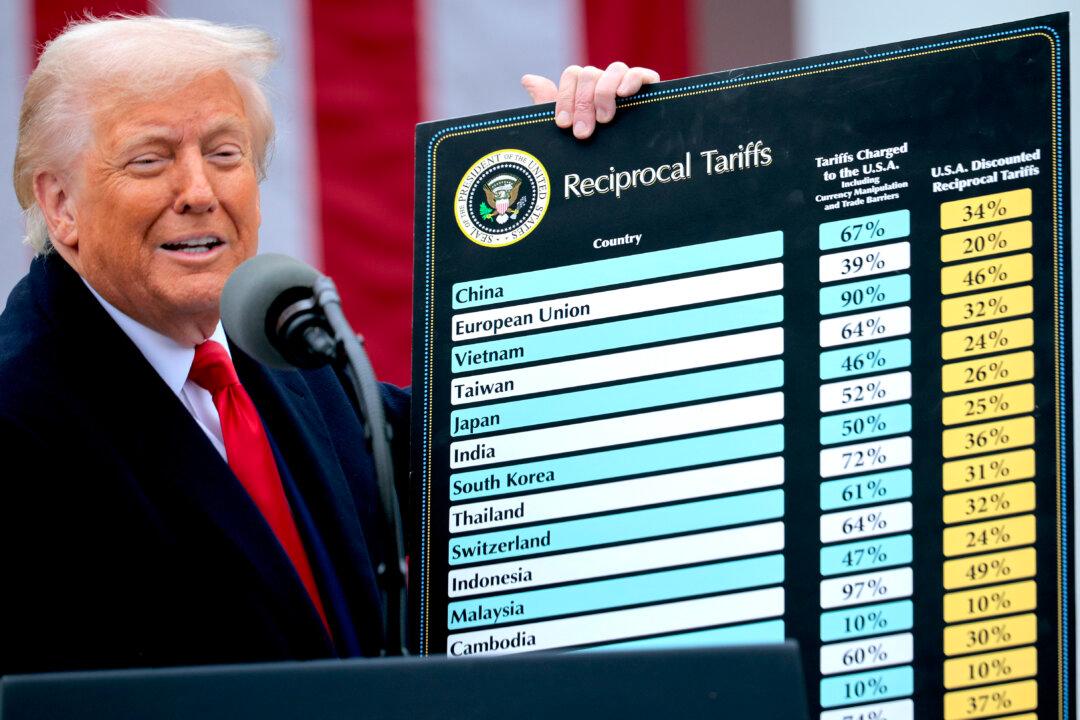WASHINGTON—After suffering the largest contraction on record from April through June, the U.S. economy is on track for a substantial recovery in the third quarter. With just over 70 days to the election, a number of positive economic data shows that the economy will fare better than previously anticipated.
Employers added more than 9 million jobs in the past three months, recovering 42 percent of the jobs lost from February through April due to the pandemic.
U.S. retail sales also rose for three consecutive months from May to July, reaching above levels seen before the pandemic. Compared to 2019, retail sales were up 2.7 percent in July.
“Consumer spending and employment have recovered more quickly than many, including ourselves, had anticipated just a couple of months ago,” Brett Ryan, senior U.S. economist at Deutsche Bank, stated in a report.
In addition, production activity among manufacturers began to recover from the COVID-19-related shutdowns. U.S. Manufacturing Purchasing Managers’ Index (PMI) exceeded 50 for the first time since February.
“Last week’s July industrial production report indicated that motor vehicle production and capacity had essentially completely recovered all of its lost output as factories reopened,” Ryan wrote. “Hence, gains in manufacturing PMIs are likely to come from other industries at this point in the recovery.”
Housing has also been one of the bright spots during the pandemic.
Because of low mortgage rates and strong housing demand, homebuilder confidence jumped to a record high in August. The Housing Market Index (HMI), which tracks the sentiment for future single-family home sales rose to 78, matching the record high set in December 1998.
Housing starts also increased 22.6 percent, recording the biggest gain since October 2016. In addition, building permits, a proxy for future homebuilding, jumped 18.8 percent.
Economists believe that swift response by fiscal and monetary policymakers was an important driver of the initial rebound in economic activity. They believe prolonged delays in the next stimulus package could weigh on household incomes and put a brake on the momentum this fall.
Negotiations on the next stimulus package stalled last week. The White House then issued several executive orders, raising concerns among economists that these orders could reduce the urgency of talks on Capitol Hill.
The Democratic and Republican nominating conventions may also complicate the deal, pushing it until the end of the month at the earliest, according to some analysts.
Despite challenges, Wall Street continues to expect the passage of the next stimulus bill.
Third-Quarter Growth
The U.S. gross domestic product (GDP) contracted in the second quarter from April through June by 9.5 percent, or 32.9 percent annualized, due to the lockdown measures caused by the pandemic.As the economic activity ramps up, third-quarter GDP growth is now forecast to come in at 27.2 percent annualized, according to Doug Duncan, Fannie Mae’s chief economist.
While most economists project a jump of 20 to 22 percent annualized for the third quarter, Duncan has recently revised his estimates upward on the strength of new economic data.
Goldman Sachs has also grown more optimistic in recent weeks, estimating annualized GDP gains of 26.5 percent in the third quarter and 8 percent in the fourth quarter. The Wall Street firm also raised its economic growth outlook for 2021, now forecasting a 6.2 percent jump for the year.
Goldman’s economists now expect at least one vaccine will be approved by the end of 2020 and will be widely distributed in the United States by mid-year 2021.
President Donald Trump pins hope on economic growth data for the third quarter, which will be released just days before the election.
“What we’re doing together is nothing short of an economic miracle and now, we’re doing it again,” Trump told his supporters in Minneapolis on Aug. 17. “We built the greatest economy in the history of the world and now I have to do it again. You know what that is. That’s right. That’s God testing me.”
Meanwhile, stocks continued to rally at the start of the week. The S&P 500 has fully recovered from its March trough and rose to an all-time high on Aug. 18.
Goldman Sachs recently raised its year-end target level for the S&P 500 to 3,600, which implies a growth of 6 percent over the current level. The company’s prior forecast was 3,000.





